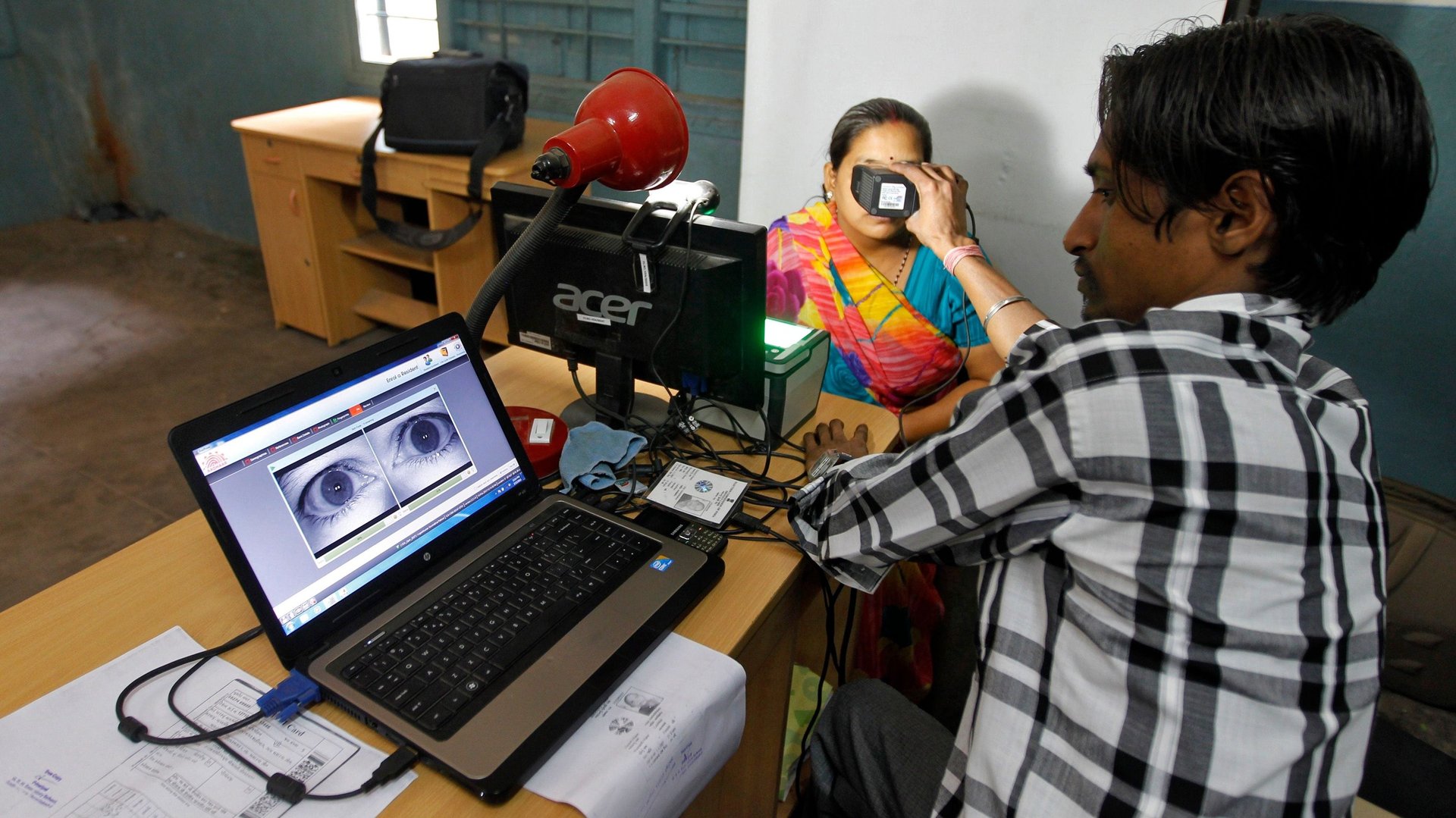A timeline of the lengthy legal battle against India’s biometric ID programme
India’s social welfare schemes and subsidy programmes have long been plagued by inefficiencies. From the disbursement of food grains and cooking gas to water and electricity subsidies, government schemes have been characterised by pilferage and theft.


India’s social welfare schemes and subsidy programmes have long been plagued by inefficiencies. From the disbursement of food grains and cooking gas to water and electricity subsidies, government schemes have been characterised by pilferage and theft.
Launched in 2009, Aadhaar, the world’s biggest biometric programme managed by the Unique Identification Authority of India (UIDAI), was touted as a solution to these problems. However, questions over data privacy and safety, besides potential discrimination, were raised following the programme’s launch.
A prolonged legal battle ensued.
Today (Sept. 26), the supreme court of India extended the programme’s constitutional validity, saying it provides dignity to the poor. However, the court also watered down Aadhaar’s scope substantially, and has sought early legislation to plug other loopholes.
The key arguments that were made by both sides, in the run-up to today’s judgment, were:
Below is a timeline of the legal tussles the Aadhaar programme has faced:
2009: The UIDAI is created, with Infosys co-founder and former CEO Nandan Nilekani as its first chairman.
2010: The National Identification Authority of India bill, 2010 (NIAI bill), that sought to give legal backing to the Aadhaar project, is introduced in parliament.
2010: Ranjana Sonawane from Maharashtra’s Tembhli village, 470 kilometres from Pune, becomes the first Indian to get an Aadhaar number.
2011: The parliamentary standing committee on finance rejects the NIAI bill on concerns over privacy, identity theft, misuse, security of data, and duplication. In September 2011, the number of Aadhaar card-holders crosses 100 million.
2012: Former high court justice KS Puttaswamy files the first petition challenging Aadhaar, arguing that it violates privacy and has no legislative backing. The government argues that the constitution does not recognise privacy as a fundamental right. In early 2012, Aadhaar enrollment crosses 200 million.
2013: The supreme court says “no person should suffer for not getting Aadhaar card,” affirming that the programme is voluntary. A bench at the apex court asks the government to refrain from making the UID mandatory for gas connections, vehicle registration, scholarships, marriage registration, salaries and provident funds. By December 2013, over 500 million users have registered for Aadhaar.
2014: A supreme court order denies the centre the right to make Aadhaar mandatory. The court also forbids UIDAI from sharing information in the Aadhaar database with any agency without the individual’s consent.
2015: In July, the centre argues that there is no fundamental right to privacy; it is instead subject to restrictions in public interest. In August, a three-judge supreme court bench limits the use of Aadhaar to certain welfare schemes, and orders that no one should be denied benefits for the lack of an Aadhaar card. It also adds that the programme is voluntary.
2016: The Aadhaar Act, 2016, is established in March. It allows eligible individuals to get their own UIDs for tamper-proof transfer of subsidies and benefits. A month later, the number of users registered on the Aadhaar database crosses a billion.
March 2017: The voluntary Aadhaar programme is made mandatory for 22 government schemes.
June 2017: The apex court upholds Section 139AA of the Income Tax Act, saying that making Aadhaar mandatory for income tax assessees does not violate the fundamental right to equality or the fundamental right to practice one’s profession or trade. A partial read down says those without Aadhaar need not obtain it, but those who have it must link it with PAN.
July 2017: Chief justice JS Khehar announced that a five-judge bench would decide on the right to privacy on July 12. The five-judge bench then refers the matter to a larger nine-judge bench.
August 2017: Supreme court rules in favour of privacy being a fundamental right. The country’s highest court says that it will hear petitions on Aadhaar-related matters.
January 2018: A reporter from the Tribune newspaper purchases access to people’s Aadhaar data through a shifty deal on WhatsApp for just Rs500. For another Rs300, they could print any Aadhaar card.
March 2018: A five-judge bench, led by chief justice Dipak Misra, extends the deadline to link Aadhaar to various schemes until a decision is made on whether or not the Aadhaar Act is illegal.
September 2018: The supreme court declares the Aadhaar programme constitutionally valid but strikes down key provisions allowing private entities and individuals the right to ask for Aadhaar numbers or demanding personal data on the pretext of national security.